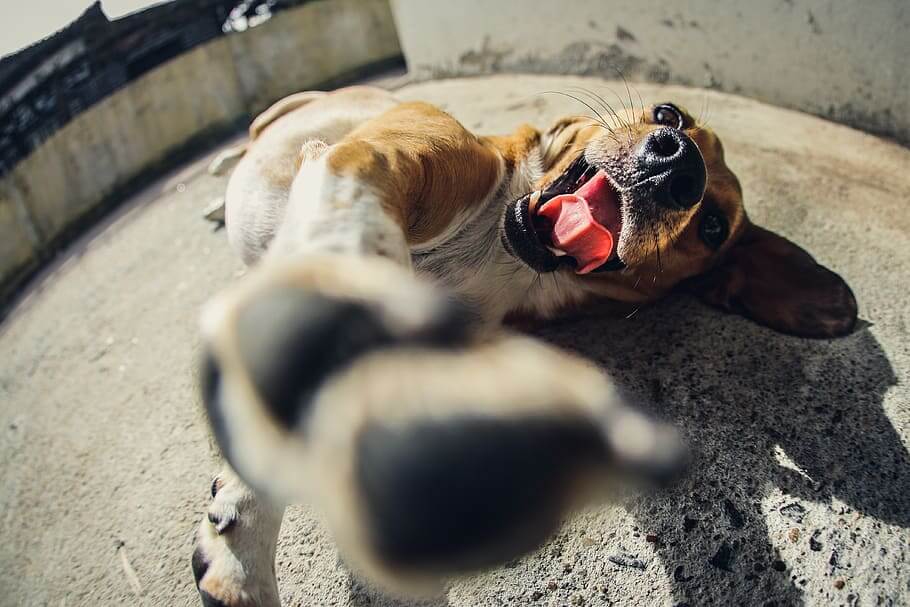Doggo Translator
As a good dog translator, you should have a thorough understanding of canine language to be successful.
Therefore, a doggo translator was created to give you an understanding of the dog’s language.
Dogs can communicate three ways: by using their tones, body language, or chemical signals.
Calming Signals
When the dog feels a little tense or stressed out about a situation, he will show a calming signal that says “Friends, I’m a little stressed and I’m calming myself down”.
It is very important to pay attention to these signs and know when the dog needs a little more space. Calming signals can be: Yawning, Stretching, Shaking, Lips licking, Itching, Blinking, Sneezing, Avoidance, and more…

The Tail
The wagging of the dog’s tail is commonly misunderstood by all his signals. However, depending on the location and movement of the dog’s tail, the wagging tail may indicate a variety of different emotions in addition to happiness and contentment.
An animated tail indicates that a dog is feeling emotionally stimulated, whether it is due to joy or even dissatisfaction. The greater the speed with which the tail wags, the more excited the dog is. One that wags its entire body from side to side is suggestive of a joyful dog, especially one that is wishing you good morning. a greater standard of arousal, which may be a negative way, can be indicated by a faster twitch-like movement.
A wagging tail between the legs reflects fear, pain, or illness. A frozen tail is a sign of alertness
The direction of the tail also reveals something about the animal. When dogs encounter something nice, their tails are wagging more to the right, and when they encounter something bad, their tails are wagging more to the left. Edge Furthermore, the higher the dog’s tail is raised during the wag, the more forceful the dog is. The worry and stress that dogs experience when their tails are pointing down to the ground or even tucked under their legs indicate that they are preparing to attack whatever they are fearful of.

Ears
Dog ears are available in a variety of forms and sizes, allowing certain dogs to communicate more effectively with them. The rule, on the other hand, stays the same for everyone. Dogs who are calm and content tend to relax their ears in the position that is comfortable for them
The ears of a dog will be raised higher on their heads when they are vigilant, or when they are feeling dominant or aggressive and they will point them in the direction of what interests them. The fact that a dog’s ears are pressed flat against the dog’s head indicates that the canine is afraid, concerned, or subservient.
Eyes
The eyes of a dog can be divided into two categories: soft and hard. When a dog is peaceful or joyful, his or her eyes are soft and relaxed, and they may appear to be squinting at times. Hard eyes, on the other hand, are characterized by the appearance of the eyes being chilly. This indicates a bad state of mind, & you’ll be able to recognize them as soon as you see them. It’s possible that the dog is guarding a toy or acting aggressively.
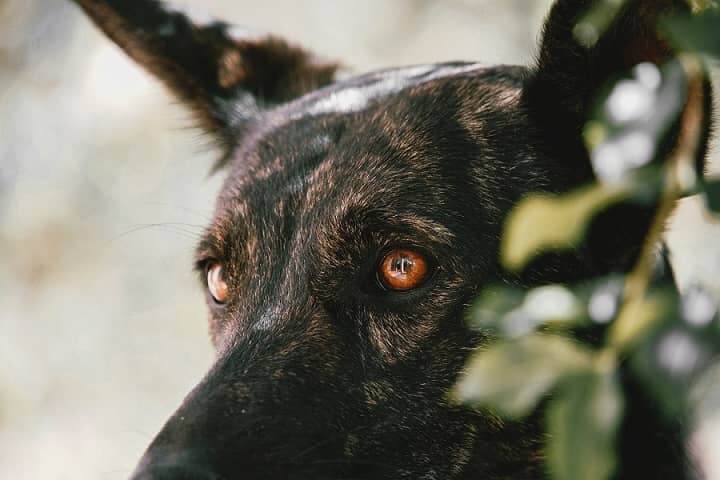
A hard gaze, in which the dog focuses closely at something for an extended period of time, is usually indicative of a potential threat. Don’t be fooled by the dog’s stubbornness or his/her refusal to listen to you. It’s a means for them to show their dissatisfaction with the circumstance. When dogs are stressed, they will deliberately glance away and avoid making eye contact with the owner.
Dogs and humans both have the same facial expressions, but they mean completely different things to each other. Dogs who yawn indicate that they are agitated and that they are using yawns to calm themselves since it reduces their blood pressure. If you yawn at a dog, he or she can yawn back at you because yawning is infectious among dogs.
The dog may smack their lips after a great meal, but it may also do so when it is nervous or in distress to communicate its discomfort.
Mouth
A comfortable dog will most likely have its mouth open & may even be panting, indicating that it is not experiencing any facial or oral stress. In some cases, the corners of its mouth could be bent slightly upward. A nervous or tense dog will typically keep its mouth shut and may pull the corners of its lips back. It may be panting heavily at the moment. The panting dog who quickly closes its lips in reaction to something in the environment may be signaling increasing stress. Drooling when there is no food around can also be an indication of intense fear or stress, as previously said. Teeth are not necessarily associated with violence. Some dogs develop a “submissive grin” or “smile,” which is characterized by the dog showing only its front teeth.
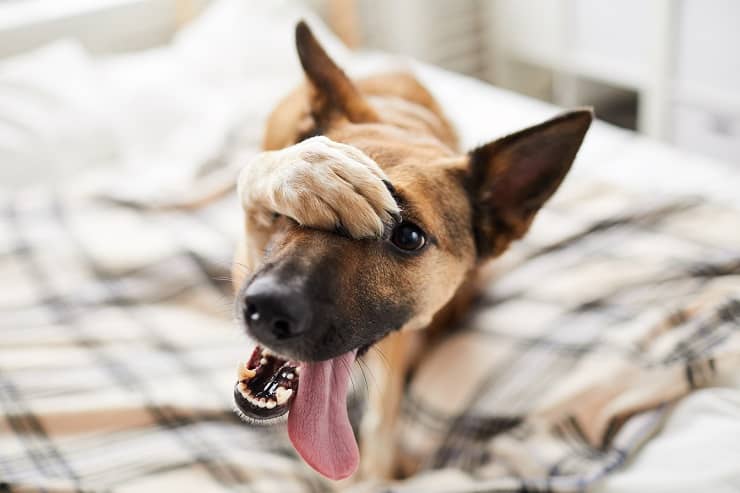
It’s important to remember nothing of these body languages is independent. They are all a part of a larger whole. As a result, when reading a dog, pay attention to every signal a dog gives off, from the height of its tail to the shape of its eyes. Your dog is always “speaking” to you in his way.
Barking
What causes dogs to bark? The answer, of course, is contingent on the circumstances. Your dog may be warning you about potential danger or simply expressing his delight that you have returned home. According to the American Kennel Club, a bark can signify delight or fear, wrath or frustration, awareness or need. The key to deciphering the bark is to look at it in context, and, of course, to get to know your dog.
Barks have a variety of tones that vary based on their purpose & what causes them.
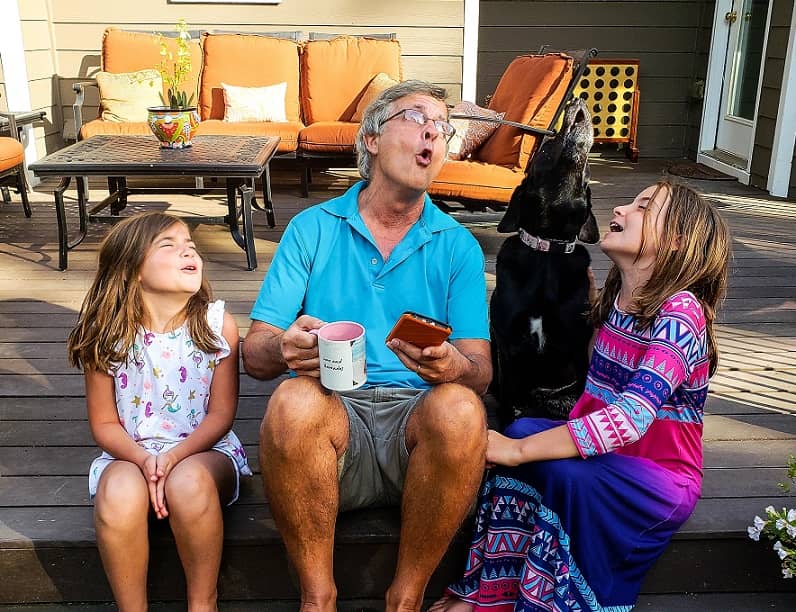
According to Whole Dog Journal, a dog who is distressed as a result of separation anxiety may emit a high-pitched, repeating bark that becomes increasingly louder as the dog becomes more frightened and upset, as shown in the sample above. In contrast, boredom barking is more monotone & repetitive in its nature. While an alert bark is often sharp and staccato, an alarm bark is equivalent in sound but with greater intensity.
Growling
Growling is frequently seen as a warning indicator. In other words, it is warning you to back off because if you do not stop touching your dog’s food, body, toys, or get out of its area, he may get hostile against you. Treat a growl with respect and ensuring your dog’s comfort is an important dog training practice. Keep in mind that you should never penalize the dog for growling. This is a form of retaliation against him for providing a warning. They won’t alert you the next time they do something.
It is acceptable to growl when you are playing tug of war, as long as it is a mild grumble and you aren’t hurting anyone or anything else in the process. An investigation by the University of California discovered that aggressive growls are often longer than playful growls, which have short pauses.
Remember: This translator gives you general information about your dog, but if you don’t count your dog, you should consult with a professional trainer.
Howling
Not every dog’s howl, and if yours does, you’ll know it’s because it’s a really distinct sound. Howling appears to be infectious among dogs, and it is frequently provoked by high-pitched noises. When an ambulance passes through a neighborhood, pay attention to the barking of neighborhood dogs.
Some studies believe that howling is a mechanism for dogs to communicate among themselves and their pack. According to the American Kennel Club, dogs that scream when left alone could be attempting to communicate with their owners who have abandoned them.
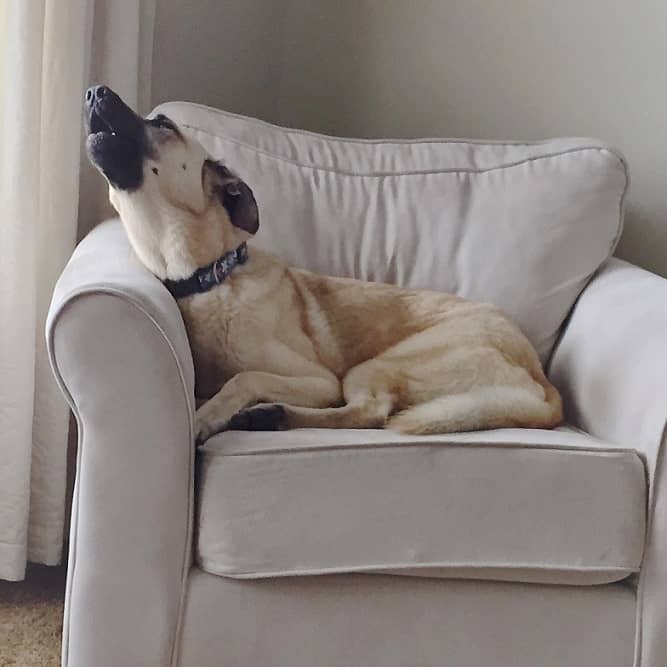
Whining
When dogs need anything, they frequently whine. Your dog can whine when she has to go outdoors when she wants a reward when she wants to go on a walk, or simply when she wants to be noticed.
However, according to the American Kennel Club, whining could also be an indication of fear or nervousness. When you take your dog to the veterinarian, he or she may whine when you’re there. When a dog suffers from separation anxiety, he/she may whine when left alone.
Yelping And Whimpering
A dog’s cry, whine, or yelp usually indicates that he’s in distress and needs to be comforted. When a dog is playing with another dog, it may yell if the other dog bites very hard. According to Whole Dog Journal, these are the sounds that dogs make when they are in distress to communicate with the rest of their pack or their humans. Whimpering may not be as loud as whining and is less passionate.
A dog’s whimper can also be an indication of intense enthusiasm, such as when its owner returns home after a lengthy absence. Most of the time, they’ll whimper and jump around while barking, licking, & wagging their tail.
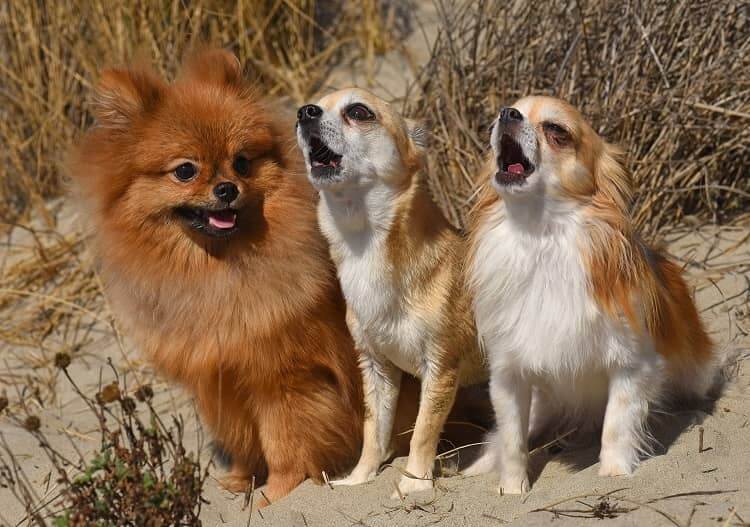
Sighing And Groaning
Your dog lays down and lets out a deep sigh or other sign of dissatisfaction, is this an expression of tremendous contentment or extreme disappointment? It might be either or all of these options. There are a variety of reasons why dogs sigh. If you’ve just returned from a pleasant stroll or frolic in the yard, the sigh is almost certainly a sign of contentment. If, on the other hand, your dog has carried you the ball 5 times and you have refused to throw, the sigh is most likely one of disappointed frustration.
Older dogs might sign as they relax for their own naps, however, puppies will make all kinds of dramatic groaning sounds as they prepare to sleep. Those are pleasant sounds that may entice you to settle down & snuggle with them as well as they do.
Check our latest posts

Which Sense Do Dogs Use Most?
Which Sense Do Dogs Use Most? Dogs are born with three senses: scent, touch, and taste, all of which are functional from the moment they are born. Did you know that the typical dog’s nose contains over 220 million scent receptors, whereas the average human nose only contains approximately 5 million scent receptors?
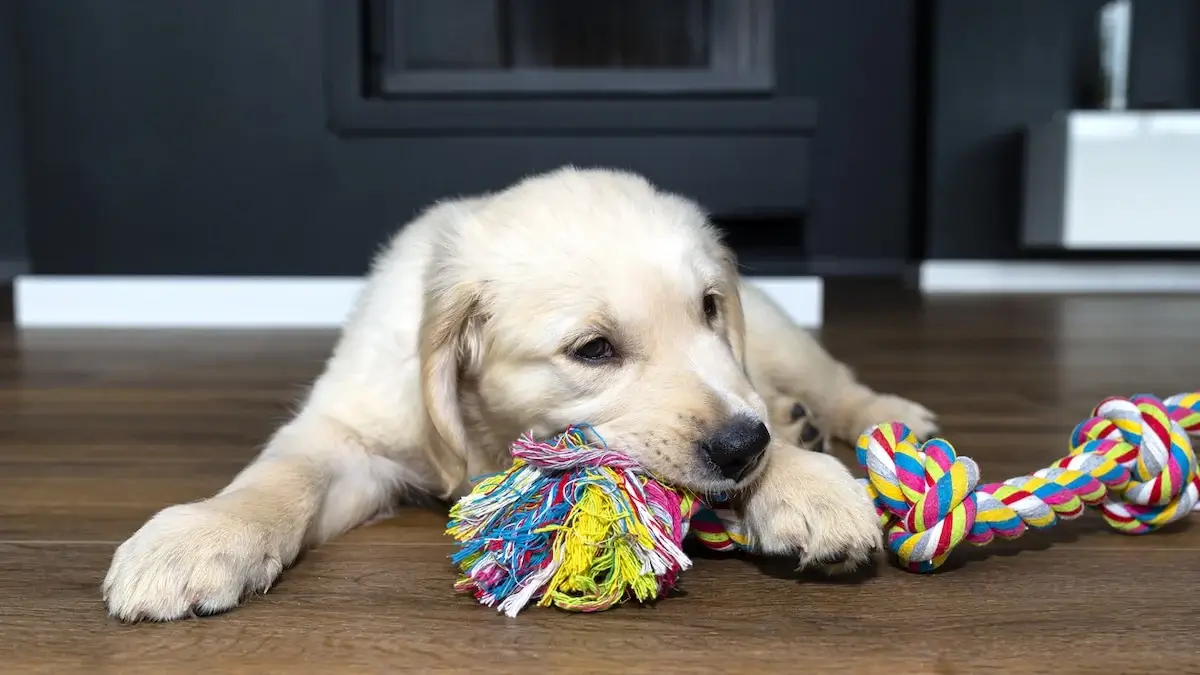
The 10 Best Tug Toys For Dogs
10 Best Tug Toys For Dogs: The advantages of a game of tug of war. The act of tugging on a dog’s leash can improve impulse control, boost self-esteem, and deepen the link between dog and owner. As a result, it is a highly effective training method that taps into people’s innate motivations and reinforces them.
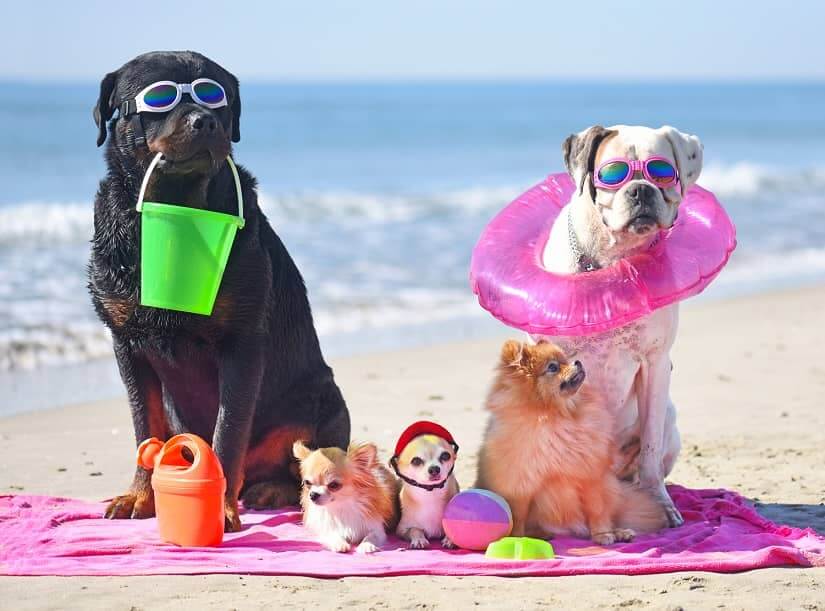
How To Keep Dogs Cool In Summer
When the temperature rises in the summer it is essential to figure out how to keep our dogs cool. Dogs can’t sweat like we do so we have to figure out how to keep them cool. Here are some useful tips to ensure your dog remains safe during the summer.

